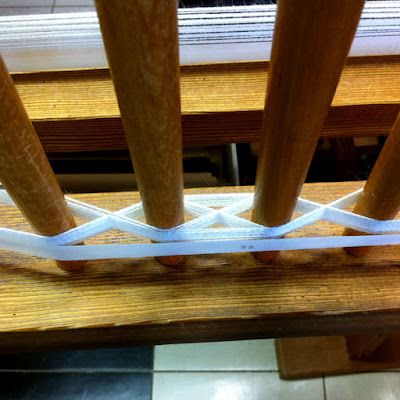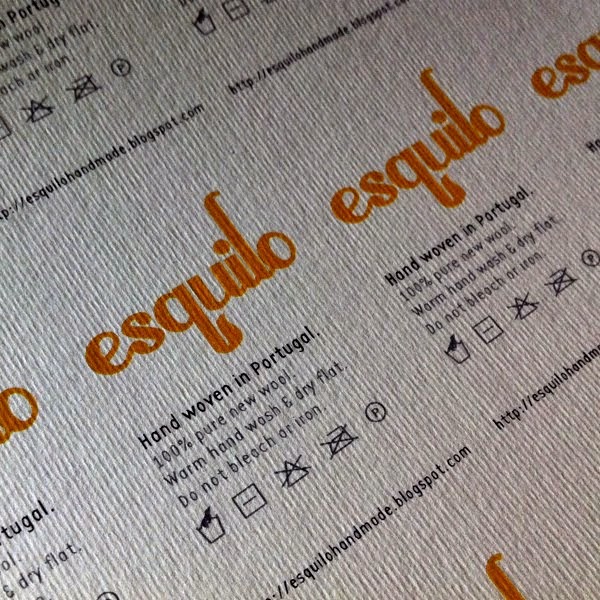And so begins Kasuri, the real reason why I ended up in Japan. Kasuri is a resist dye technique, where threads are bundled, masked, dyed and when woven create wonderful patterns. There are three types of basic patterns you can achieve: warp, weft or warp and weft(double Kasuri). There are still some more techniques to create patterns by dyeing the warp directly on the loom, shifting Kasuri and others we may not have time to learn.
We started with an 80gram skein of ramie yarn. Ramie comes from the nettle family and is very commonly used in Japan, being similar to linen in it´s lightweight and fresh properties, and absorbs moisture quite well. Everything about Kasuri has to be very precise as seems everything in Japan. Measurements are to the millimeter or things just don´t add up, because mistake on top of mistake makes a big difference at the end of the day in Kasuri.
The first day involved lots of measurements, winding the warp and weft and tying the Kasuri pattern for both, leaving them ready for day 2 which was today when the yarn was dyed in a colour of our choice. The end result will be a set of coasters that show the various basic types of kasuri and seen above in the green samples.
Working in the dye room was very exciting, but it all happened a little fast and if it wasn´t for the help our expert teachers it would not have gone so smoothly. In the end presented with hundreds of colours to choose from I chose a reddish orange that I named "Temple Orange" after the many temples and shrines I have seen painted a similar colour.
When it was finally time to remove the kasuri binding we were all relieved to see the supposed white we had started with. And as soon as it was all dry it was off to pre sleying the reed. This means that tomorrow we finish setting up the loom and with a little luck start weaving.
If you ask me, there seems to be a little monkey magic going on here.




































